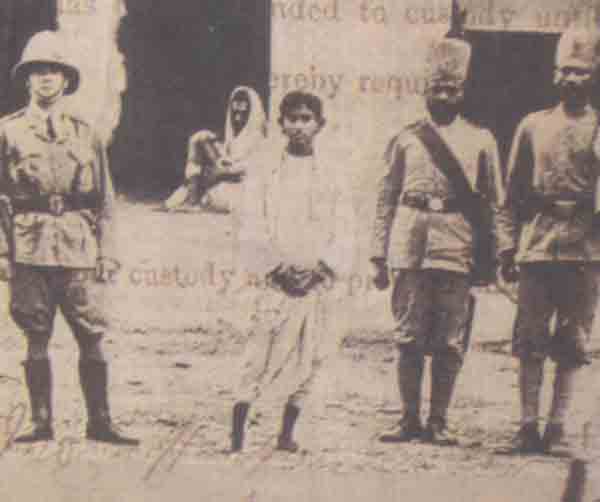Revolution - I
 •
by
•
by Uv Ajed


Revolutionary Thought -"India saw from the beginning, and, even in her ages of reason and her age of increasing ignorance, she never lost hold of the insight, that life cannot be rightly seen in the sole light, cannot be perfectly lived in the sole power of its externalities." - Aurobindo Ghosh, Anushilan Samiti

As per our earlier promise we will be shortly publishing 7 part article showcasing the revolutionary politics & parties of pre-independent India. These articles are not our original work. The original source will be credited at the end of each part of the article.
The party of focus for this article is..

Anushilan Samiti

When the system fails, a power rises – this notion going on for centuries from immemorial past got evident in the early 20th century with the appearance and meteoric rise of Anushilan Samiti, revolutionary society in Bengal to wrest freedom from iniquitous British Empire, following the clarion call of Swami Vivekananda to arise the nation in deep slumber. The organization, attracted youths, from the whole of then Indian subcontinent, having the conviction on policy of blood and iron altogether.
From the very beginning Anushilan Samiti had made its position clear through relying on the saga of national revolution (Rashtra Biplab). Thoughts, speeches and writings of Swami Vivekananda and Bankim Chandra Chatterjee influenced its founding leaders most. They included Pramatha Nath Mitra, Satish Chandra Basu, Arobiondo Ghosh, Jatindra Nath Banerjee and Surendra Nath Tagore and all these led to formal establishment of Anushilan Samiti on March 24, 1902. It is needless to say that the organization started as a bastion of physical exercises (Sharadapi) and changed into a revolutionary society bit by bit.

The expansion of Anushilan Samiti took place through formation of an assortment of akhada s (gymnasiums) in different parts of Calcutta and its outskirts. Trainings on different forms of exercises, combat war techniques, sword fighting, lathi wielding were provided to members. All these, innovation without a shred of doubt, stimulated the youth to the greatest extent and documents assert that thousands of people used to gather to perceive related tournaments. Establishment of Dhaka Anushilan Samiti and assignment of Pulin Behari Das in 1905 as its chief led to the further development of the organization.

Within a brief period, under leadership of Pulin Behari Das, no less than 600 branches of Samiti were formed and success of Bikrampur and Barishal, in this regard, was awe-inspiring.
Alipore conspiracy case
In April 1908, two young recruits, Khudiram Bose and Prafulla Chaki were sent on a mission to Muzaffarpur to assassinate the Chief Presidency Magistrate D.H. Kingford. The duo bombed a carriage they mistook as Kingsford's, killing two English women in it. In the aftermath of the murder, Khudiram Bose was arrested while attempting to flee, while Chaki took his own life. Narendra Nath Bhattacharya, then a member of the group, shot dead Nandalal Bannerjee, the officer who had arrested Khudiram. Police investigations into the murders revealed the organisations quarters in Manicktala suburb of Calcutta and led to a number of arrests, opening the famous Alipore Conspiracy trial. Some of its leadership were executed or incarcerated, while others went underground. Aurobindo Ghosh himself retired from active politics after serving a prison sentence, his brother Barin was imprisoned for life.

Nevertheless, planning of Anushilan Samiti, better known as Hindu-German conspiracy case in history, to overthrow British Raj in India, during World War I, and its failure made the government more furious and vindictive. Owing to rising governmental repressions and dearth of potent activists, several branches of Anushilan Samiti closed down for the moment while many others even ceased to exist.
The dynamic influence of Samiti on the Indian society, as a result, started to decline and the gap was filled by mass organizations of Indian National Congress and Communist Party, new and enigmatic torch bearer of revolution. By 1930 the damage was done and from Anushilan Samiti, following rigorous imprisonments for years, lots of its erstwhile members got involved with other political factions. The majority of these were socialists and communists, still under the hypnotic spell of socialism and success of Soviet Union.
Yet, what is most striking is the denial of the Post-Independent Government of India to accept these revolutionaries, who sacrificed everything for the country, as freedom fighters.

Original Source can be accessed Here


I shall be telling this with a sigh
Somewhere ages and ages hence:
Two roads diverged in a wood, and I—
I took the one less traveled by,
And that has made all the difference.



Comments
[removed]
xordin was here...
o7
voted..o7
o7
ShockWavve was here
o7
Rakr was here
interesting reading
o7